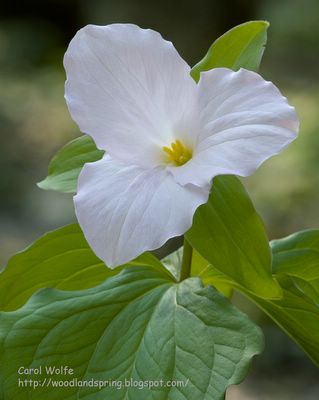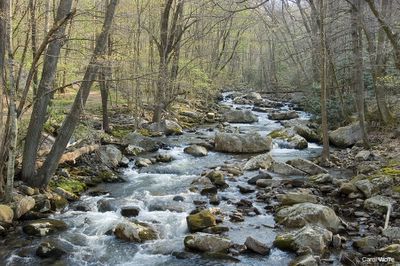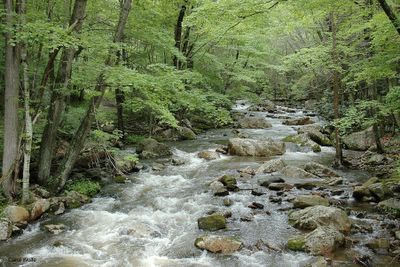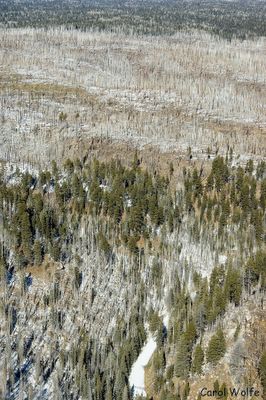Spring is nearly here, so it's time for me to turn my attention away from distant adventures and back toward the primary theme of this website: WOODLAND SPRING.
I love to learn about and photograph the springtime woodland wildflowers. But to me, it's not just the flowers themselves that attract my devotion. The flowers are part of a beautiful and ever-changing landscape--the forest.
As I put together my story of spring, I plan to show not only the wildflowers themselves, and how various species change through out their growing seasons, but I also plan to tell the story of the landscape in which these beautiful wildflowers live.
For example, some flowers bloom earlier than others, some last longer than others. And all the while, the landscape around them changes. During early spring, the forest sometimes receives a blanket of snow--as winter tries to retain its grip on the forest. As the season progresses, the days get warmer and the light on the forest floor gets more and more intense--until eventually and gradually the leaves on the trees overhead fill in, casting shadows across the forest floor.
In the process of trying to tell the story of Woodland Spring, I will include scenic shots that show the landscape and how it changes. I will return to some of the exact same locations throughout the season and get basically the same shot. Sets of shots from the same location can then be compared to show, literally, how each selected part of the forest has changed. And though my "scenic" shots (see below for the first sampling) may not be the most beautiful photos I have ever created, they will become part of the story that I tell, because they are part of the story of Woodland Spring.
At this time of year, the ground looks deceptively lifeless and bare, except for a litter of leaves--unless, of course, there is also a blanket of snow. The only green in view is from the evergreens like rhododendrons, mountain laurels, hemlocks, and pines. The decidious trees are still completely bare, or if they are starting to form flowers way up high in their branches, you can hardly tell from the perspective of a would-be wildflower on the ground.
As the next several weeks go by, however, the forest floor will gradually become more and more green. Soon delicate wildflowers like spring beauty and hepatica will emerge and begin to bloom. As time goes by, more and more wildflower species will join in this on-going drama that repeats itself year after year. The story will include trillium, wood anemone, bellwort, wild ginger, and more.
Once spring is well underway, the leaves in overhead trees will sprout from their buds and grow larger, expanding in spurts sometimes, like just after a big rain. The ground will become more damp and more shaded.
As the shade "thickens," many of the early-blooming wildflowers will go dormant--hopefully after having first made and dispersed many seeds. During the warmer but darker weeks of late spring, some wildflowers will thrive to finish their growing season in the relative shade. These include Solomon's Seal, wild geranium, and May Apple, to name a few.
And though it gets shady up here in the decidious forests of North America, it is nothing like that of the tropics. So when I say shade, I am not talking about shade that completely covers 100% of the forest floor--as might be the case in a mature, dense tropical forest. Even when there is shade up here in the forest, there are always speckles of light that move across the forest floor as the sun crosses the sky each day.
These are just a few things to think about when considering the story of Woodland Spring. I have been waiting a long time to share this story--since well before September 2005 when I started this website--and now it's nearly time to begin.
To get an idea of how the forest changes, please check out the 5 pairs of photos below. These landscapes show the dramtic change in the forest from one day to the very next.
I went to the forest first on February 17 to get an idea of shots that I could start "collecting" throughout the upcoming season. I took a variety of shots, figuring I'd work with the ones I like best. And then, surprise-surprise, it snowed that night, so I decided to return to the forest the next day. It was fun to repeat some of the same exact shots, so later I would be able to compare them.
For several pairs of shots, I plan to expand them into a series of shots--maybe a set of 10 to 12 photos of each exact same perspective, showing the same piece of landscape every couple weeks from now until the beginning of June.
So stay tuned. The story is just getting started, and I do believe it will be fun.



















































